There’s a question that all ice cream lovers must face sometime during their on-again, off-again relationship with the frozen confection. The question is one we are ashamed to ask, but eventually have to wonder, "What the heck is gelato?"
Sure, we know it’s different. But what makes it that thick, creamy Italian delicacy we yearn for? For help solving the mystery, FoxNews.com went to one of New York City’s resident gelato experts.
Michelle Catarata is a professional pastry chef, trained at the Institute of Culinary Education in the heart of New York City. Now her main focus is gelato. When Catarata shifted to making ice-based desserts, she took her background in baking with her.
At Sorella and sister gelato shop, Stellina, the former pastry chef uses everything in her arsenal for inspiration. Some of her gelato flavor highlights include Brown Sugar Strawberry, S'mores and A Bee Named Elvis, which is honey gelato, banana, caramel and peanut nougats.
Catarata says she grew up watching her grandmother cook for her family in Queens, N.Y. Eventually, Catarata was allowed to help with the baking and from that moment on, she was hooked.
"I have such a high sugar tolerance," Catarata said, laughing as she explained what she liked to bake. "I’m surprised I’m not dead yet."
For now, Catarata has focused her sights on gelato. In the kitchen of a quaint, East Village restaurant, she concocts all kinds of drool-inducing creations. And even her grandmother has come to try Catarata’s inventions.
"It was one of the proudest moments of my life," she said, recounting the day her grandmother visited the gelateria. "That sounds so corny, but it’s true."
To help us crack the case behind what makes gelato, well, gelato, Catarata has chosen her signature mocha flavor. So pull out that magnifying glass, Watson, you’re about to solve one of greatest dessert mysteries ever.
1. Step One: Ingredients
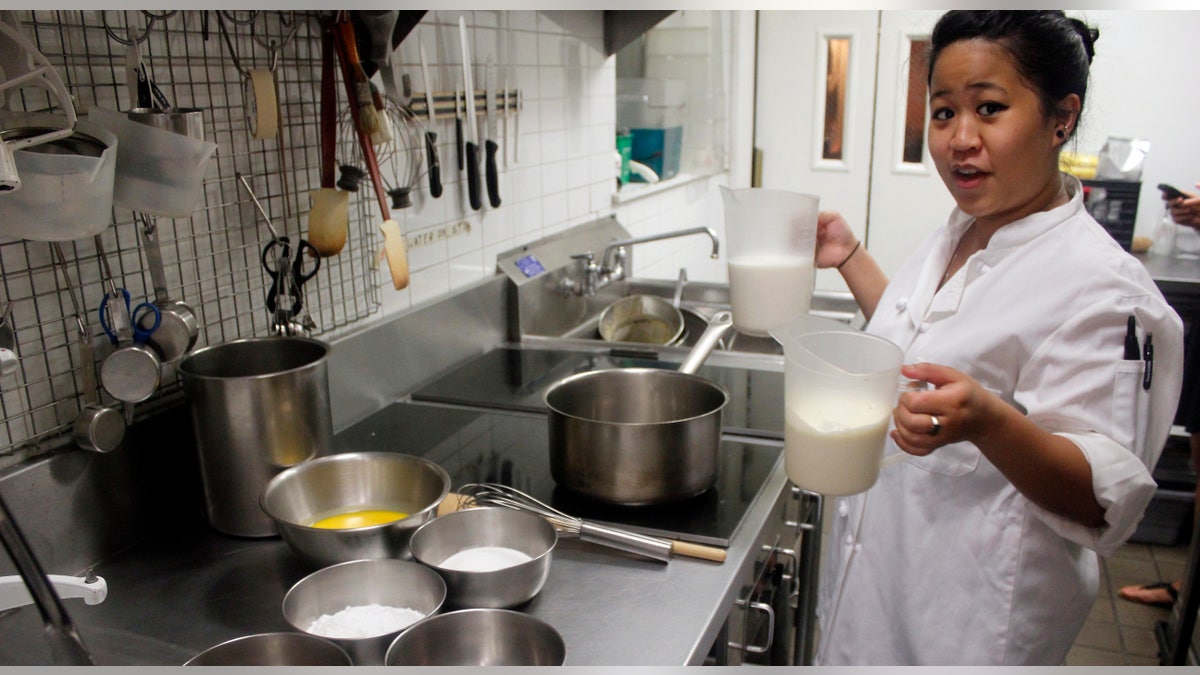
(Adrienne Berard)
For one pan of mocha gelato you will need:
1 quart of milk
2 cups of cream
220 grams (just under a cup) of sugar
1 cup of toasted cocoa nibs
1 cup of glucose
360 grams (1 1/2 cup) of egg yolk
1 tablespoon of espresso
1 1/2 teaspoon of coffee grounds
1 1/2 teaspoon of salt
2. Step Two: Mix

(Adrienne Berard)
In large sauce pan mix together the milk, cream, sugar, toasted nibs and glucose. Here’s a secret about gelato: it actually has less fat than ice cream, even though it’s heavier. Gelato has less cream overall -- and it’s the fat content in cream allows for air to stay trapped in the ice cream. So the lighter and fluffier your ice cream is, the more fat it has in it.
3. Step Three: Boil

(Adrienne Berard)
Bring the mix slowly to a boil and then turn it down and let it simmer. The hotter the mix, the quicker you will be able to cook the egg yolks into the milk, which is the next step. But if the milk is too hot, your eggs will scramble and you will have to start all over again. It’s a delicate balance, so make sure you are constantly whisking the mix and keeping an eye on the heat.
4. Step Four: Temper
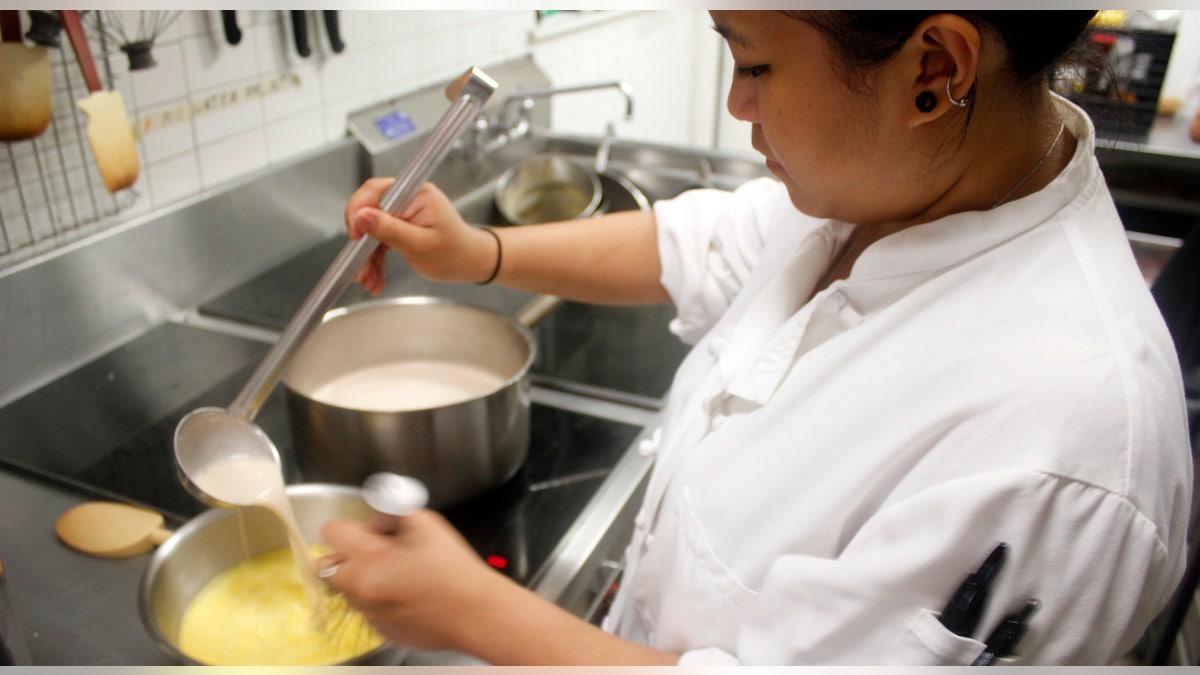
(Adrienne Berard)
For this next step you want to temper the eggs in with the hot milk base. This takes a strong arm and some focus. You have to ladle several spoonfuls of your simmering base into the bowl of yolks, all while whisking the yolk so it doesn’t scramble. The idea is to slowly bring the yolks to the same temperature as your base. Once you’ve ladled in a few spoonfuls and the average temperature of the yolks has risen, then slowly add the yolks to the base on the stove top. While continuously whisking, you want to bring that mix to about 175 F or 180 F.
5. Step Five: Add the Rest
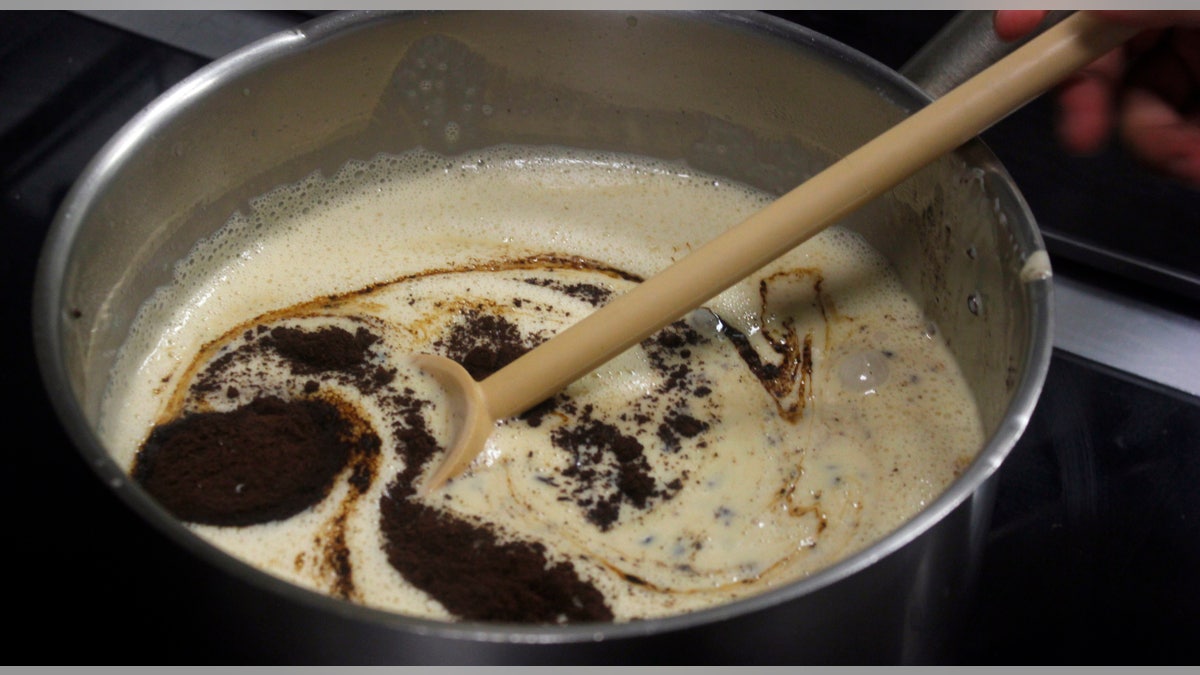
(Adrienne Berard)
Into the simmering mix add the coffee grounds, vanilla, instant espresso and salt. Continue whisking away.
6. Step Six: Nappe

(Adrienne Berard)
Continue to cook the mixture until it becomes a “nappe.” Don’t know what that means? We didn’t either. A good way to tell when you’ve got a nappe is that the hot base will cling to whatever utensil you are using to mix, a wooden spoon is a good choice. Another trick is to run your finger along you mixing spoon to see if it leaves a clear line, with tiny ridges. When that happens, your mix has thickened and you’re ready for the next step.
7. Step Seven: Strain
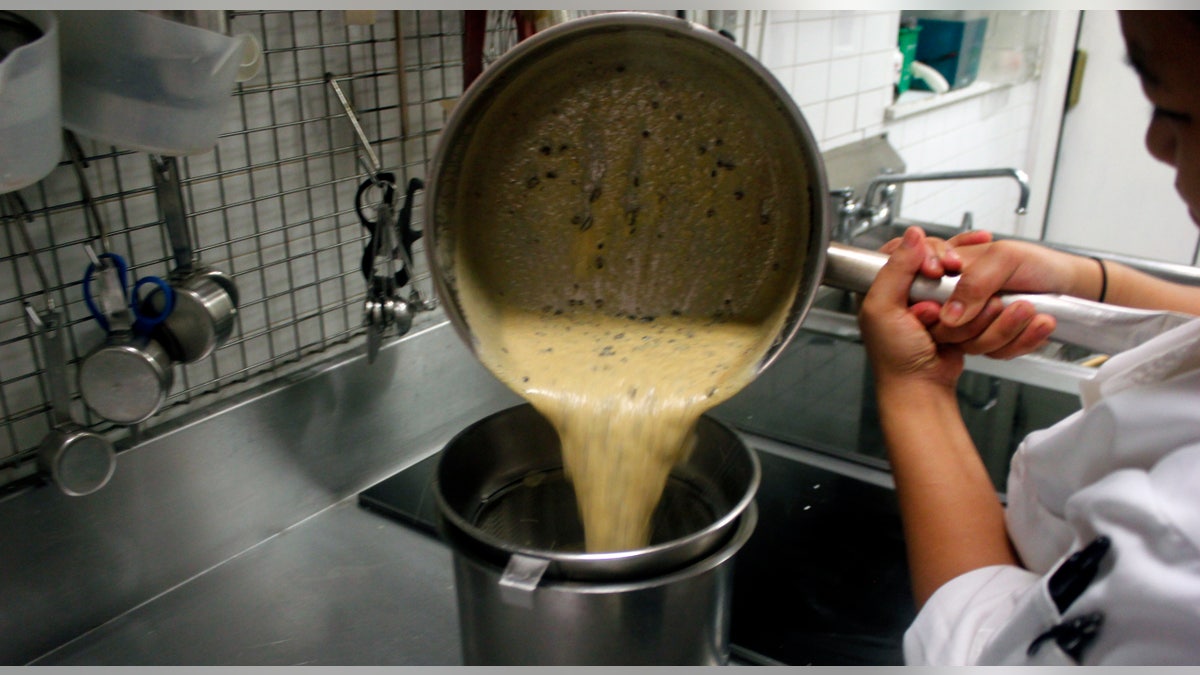
(Adrienne Berard)
Next take your mix off the stove and run it through a strainer to remove the cocoa and coffee grounds.
8. Step Eight: Ice
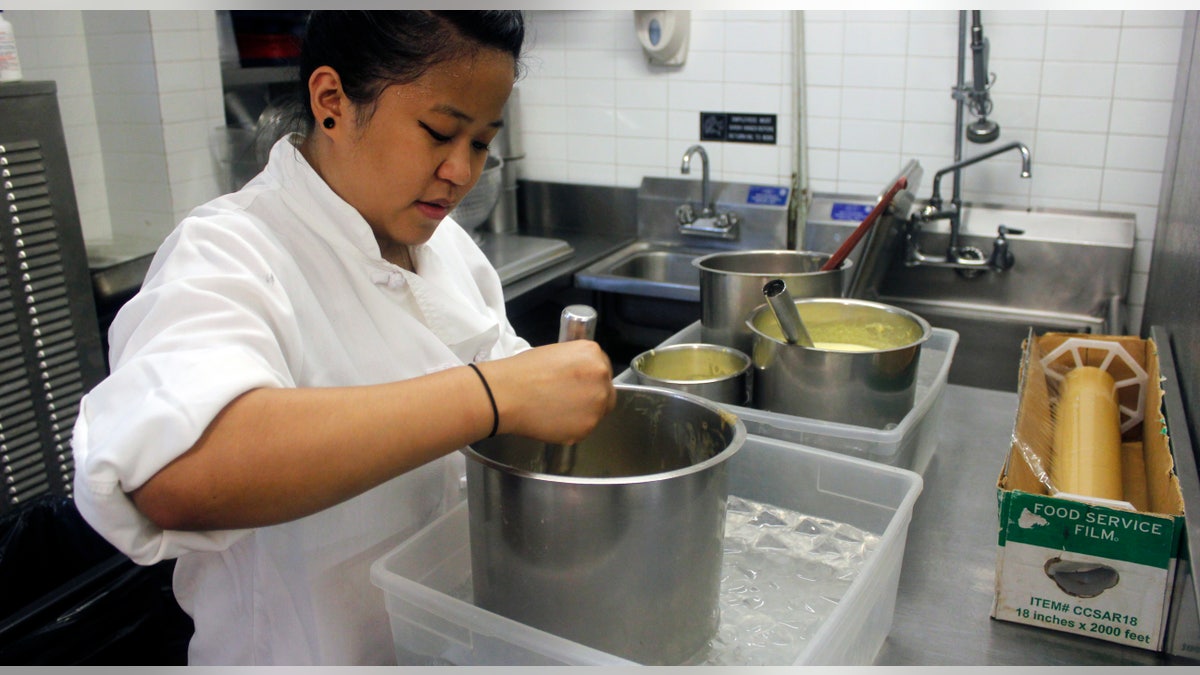
(Adrienne Berard)
Place the strained mixture into an ice bath and let cool. Once the mix is at room temperature, remove from ice.
9. Step Nine: The Machine

(Adrienne Berard)
For this step you’re going to need an ice cream maker of some kind. There’s no way to do it without the machine. When cream freezes, it naturally forms ice crystals. An ice cream maker will spin the cream while it freezes. This will keep crystals from forming and will be the reason your ice cream is not a popsicle. You only have to run the machine for about five minutes and your gelato is ready. Just open the machine up slowly and let your gelato pour out.
10. Step Ten: Enjoy
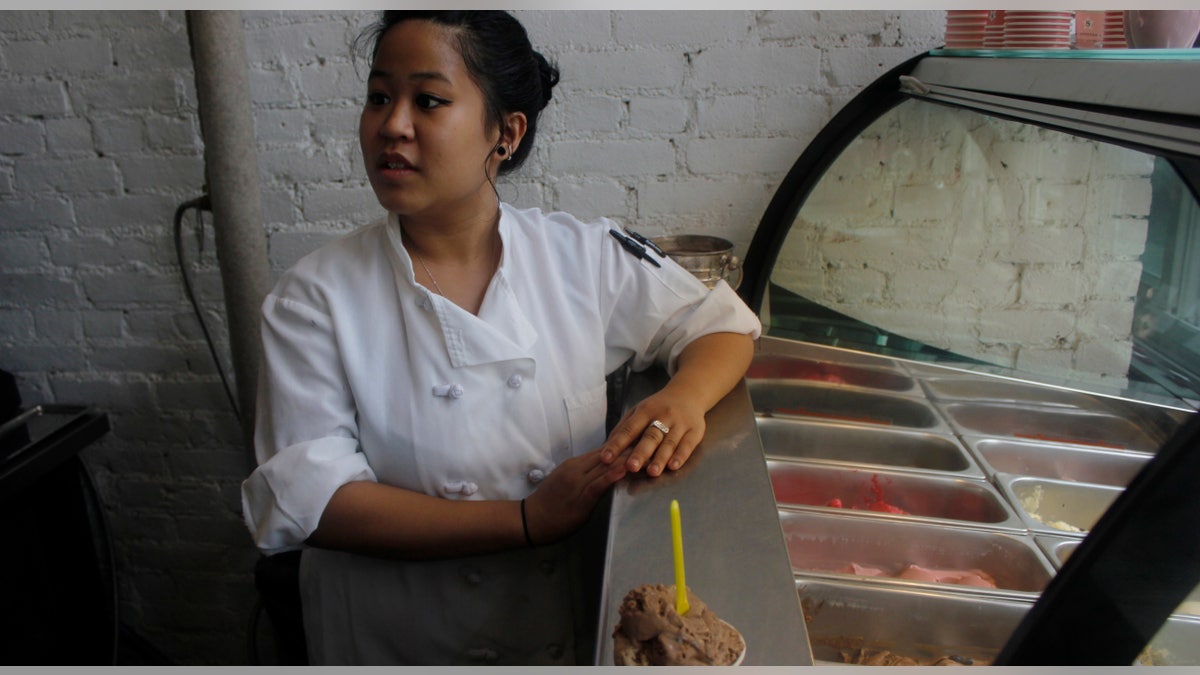
(Adrienne Berard)
Congratulations. Molto bene. You have made your own gelato. Now grab a spoon and dig in. Buon appetito.